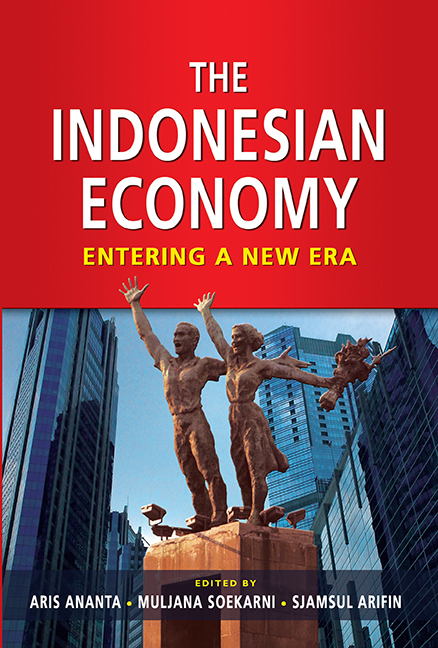Book contents
- Frontmatter
- Contents
- List of Tables
- List of Figures
- Message from the Deputy Governor of Bank Indonesia
- Message from the Director of the Institute of Southeast Asian Studies
- Foreword
- Preface
- Contributors
- PART I INTRODUCTION
- PART II MONETARY AND FISCAL POLICIES
- 3 The Dynamics of Monetary Policy
- 4 The Financial System: Balancing Financial Stability and Economic Growth
- 5 Economic Crisis and Fiscal Policy Management
- 6 Understanding the Role of Fiscal Stimulus in Maintaining Economic Resilience
- PART III DOMESTIC ECONOMY
- PART IV SEARCH FOR NEW PARADIGMS
- Index
3 - The Dynamics of Monetary Policy
from PART II - MONETARY AND FISCAL POLICIES
Published online by Cambridge University Press: 21 October 2015
- Frontmatter
- Contents
- List of Tables
- List of Figures
- Message from the Deputy Governor of Bank Indonesia
- Message from the Director of the Institute of Southeast Asian Studies
- Foreword
- Preface
- Contributors
- PART I INTRODUCTION
- PART II MONETARY AND FISCAL POLICIES
- 3 The Dynamics of Monetary Policy
- 4 The Financial System: Balancing Financial Stability and Economic Growth
- 5 Economic Crisis and Fiscal Policy Management
- 6 Understanding the Role of Fiscal Stimulus in Maintaining Economic Resilience
- PART III DOMESTIC ECONOMY
- PART IV SEARCH FOR NEW PARADIGMS
- Index
Summary
INTRODUCTION
The implementation of monetary policy in Indonesia has passed through the dynamics of developments and structural changes since its independence in August 1945. However, in the early days of independence, the environment was preoccupied by political agenda, and monetary policy (as well as fiscal policy) was not yet viewed as a priority. Therefore, it was not surprising that despite the existence of Bank Indonesia (the central bank of Indonesia), the monetary policy could not assume its main function of controlling hyperinflation that was stemming from excessive money supply and government expenditures for the military and “beacon” projects. Hyperinflation reached 635 per cent in 1966.
Monetary policy received greater attention when the New Order government came into power. A new Bank Indonesia Act was stipulated in 1968 with multiple objectives, namely, to achieve and maintain price stability, stimulate economic growth, and create employment. Since then, economic stability and development have become the main priorities for the government and are pursued through periodic five-year development plans, known as Rencana Pembangunan Lima Tahun or REPELITA, which started in 1969. The monetary policy focused on controlling inflation and coordinating with the fiscal authority to achieve economic stability. Inflation could finally and drastically be controlled to below 10 per cent in 1969. Thereafter, between 1969 and 1981, economic growth averaged about 7.86 per cent, with high revenue coming mainly from oil exports. Nevertheless, the inflation rate was significantly higher than growth rate, and averaged 15.76 per cent during that period. This was due in part to the international monetary crisis, in addition to both excess liquidity in the economy and the rupiah's devaluation in November 1978.
The most significant event that caused structural changes happened at the time of the Asian financial crisis in 1997/98. This prolonged financial crisis almost destroyed the Indonesian economy that was previously known as one of the Asian Tigers. Since this crisis, the monetary policy in Indonesia has been generally classified under two different eras: monetary policy in the pre-crisis era and monetary policy in the post-crisis era.
Since 1983, before the crisis began, significant structural changes had been taking place as Indonesia underwent financial liberalization, whereby direct monetary policies were replaced with indirect monetary policies. From 1966–83, Indonesia obtained abundant foreign exchange reserves from oil export revenues that were absorbed to control inflation.
- Type
- Chapter
- Information
- The Indonesian EconomyEntering a New Era, pp. 63 - 106Publisher: ISEAS–Yusof Ishak InstitutePrint publication year: 2011



